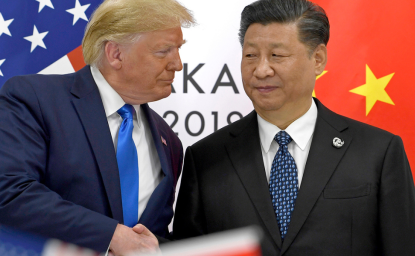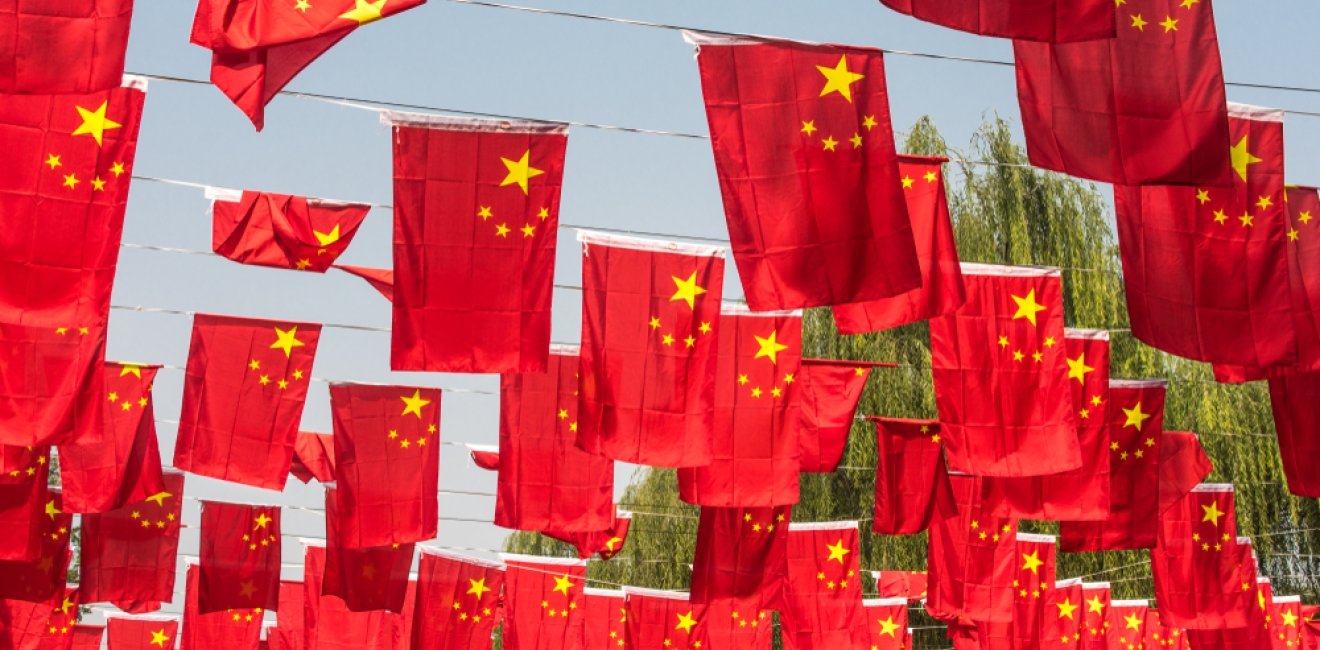Over the past decade the Chinese economy has nearly doubled in size, going from 8.93 trillion dollars in 2012, to 16.33 trillion dollars in 2022 (the most recent year for which we have data). This has led to concerns that China represents a viable alternative to the Western Order and that the “China’s Model” is superior to the experience of the West. Such concerns have extended all the way to the top of the American government. The White House’s most recent National Security Strategy argues that we must out-compete China, and further states that “The PRC is the only competitor with both the intent to reshape the international order and, increasingly, the economic, diplomatic, military, and technological power to do it.” President Biden has directly weighed in with his March 2021 statement [RZ1] that “we’ve got to prove democracy works,” which led to concerns that China’s version of development and authoritarianism is not only preferable, but more importantly, better suited to the needs to the world’s developing countries.
Such fears are misguided. It is true that China’s growth has been phenomenal with the country transforming from an agrarian society to a high-tech juggernaut that is now the world’s second largest economy. The World Bank estimates that this growth has lifted roughly 800 million people out of poverty, and according to the UN, China’s Human Development Index (HDI) has increased from .41 in 1978 to .76 in 2021, the most recent year data is available. These impressive statistics have led to anxiety among some that a version of authoritarianism is a necessary condition for economic growth. However, these fears are misplaced.
The Chinese experience (not the so called “China model”) does not represent a viable alternative to development under democratic governments with strong institutions. The real-world data does not support the argument that non-democratic regimes perform better at developing their countries. In fact, the data proves that democracy is far superior to authoritarianism.
While there is no doubt that the Chinese government has done many things right in its quest to modernize China and turn it into a great power, a key question remains: does it represent an alternative to the Western order?. This question is not an esoteric academic debate. If China represents a viable and alternative “model” to the Western experience, other states may be well served by emulating the Chinese experience. This issue has been clouded by the Sino-US rivalry and has taken on ideological undertones with Chinese officials insisting that their “socialist system” is “superior” and Chinese commentators arguing that the United States and its system of governance is in decline.
Based on an examination of Chinese language sources, academic studies, and publicly available data, I argue that China and its development experience do not challenge the Western order. I break this observation into three parts. First, I point out that contrary to popular belief, there is no discernible China “model.” Second, if there is a specific China model, after 45 years of “Opening and Reform” in China, there should be real world examples of countries that have successfully adopted China’s experience. The reality is that there are no states that have effectively copied China’s experience. Finally, if the foundation of the China experience is the supposed superiority of non-democratic regimes to “get things done,” the data on global development and regime type should reflect this. The data does not.
A Model or a Process?
If the experience of China constitutes a viable alternative to democratic-market-based systems, there needs to be a rough agreement on what exactly a “China model” consists of. The International Monetary Fund states that economic models can be explained by the regularities of their systems or the objectives they seek to achieve. Unfortunately for China, there is no agreement on what exactly the China model is, with some scholars calling the so called model a myth. Xiaoyang Tang of Tsinghua University argues that the Chinese government has not specified what exactly is the China model. Yu Wen Chen and Obert Hodzi point out that it is frequently defined by comparisons to the Washington Consensus instead of what it actually is. Interestingly, Zhao Qizheng, the former Chairman of the Foreign Affairs Committee of the National Committee of the Chinese People's Political Consultative Conference, eschewed the term China “model” in 2010 and states that it is not only not universal, but that “Exporting the "China model" violates China's adherence to the principle of formulating policies in combination with China's national conditions.” Furthermore, he prefers the term “China case,” (中国案例) instead of “China model” (中国模式). Regardless of whether a coherent “model” actually exists, Chinese President Xi Jinping stated at the 19th Party Congress that China offered a “blazing a new trail for other developing countries to achieve modernization. It offers a new option for other countries and nations who want to speed up their development while preserving their independence; and it offers Chinese wisdom and a Chinese approach to solving the problems facing mankind.” More recently, President Xi’s August 2023 trip to the BRICS summit in South Africa furthered this perception.
China’s economic and development success are best understood as a process of trial and error (“crossing the river by feeling the stones”) that has mixed different approaches over the decades. Crucially, many of China’s experiences proved contradictory over the decades with periods of free market capitalism, significant market restrictions, state capitalism, and more recently attacks on the tech sector. Taken as a whole, this does not constitute a model but is better understood as a process with key aspects such as a massive rural population, large injections of FDI, geographic advantages, high levels of state capacity, and perhaps most importantly, a vast, competent and professional bureaucracy. When combined with constant changes of direction by the Chinese state, it is difficult to discern what elements of the model need to be replicated for other states to achieve success.
The absence of a step-by-step model makes it extremely challenging, if not impossible, to copy. For example, should foreign countries copy the more entrepreneurial friendly free market capitalism of the 1980s, the crackdown on the private sector after Tiananmen in 1989, the gutting of state-owned enterprises of the late 1990s, the “gilded age” of crony capitalism of the 2000s, the advancement of the state at the private sectors expanse, or should they focus on achieving high levels of state capacity and a professional bureaucracy? What matters here is that the contradictory policies of various periods of Chinese economic reforms debunk the perception that a linear, and therefore, easy to follow model exists. Understanding the ups and downs of the China experience is essential. Unfortunately for China and the rest of the world, important junctures in China’s economic history are no longer readily accessible due to Chinese government censorship. For example, former Party Secretary General of the Chinese Communist Party, Zhao Ziyang, was instrumental in China’s early economic reforms in the 1980s, but has largely been removed from official history.
Where are the Examples?
Since the start of Chinese reforms 45 years ago, there has been plenty of time for real world examples of emulation to emerge and determine if the China “model” is transferable. Additionally, the fact that Beijing sponsors training programs in China for people and groups from all over the world (especially the Global South) to learn about China’s experience can be viewed as an attempt by Beijing to share its experience. For example, Beijing has established training institutions such as the Institute of South-South Cooperation and Development (ISSCAD) set up at Peking University in 2016 to train foreign officials and elites from the developing world. These people earn a professional degree in national development. Another academy was set up in Guangxi for similar purposes, with most students coming from Southeast Asian countries.
In this author’s in-depth interviews with experts based in think tanks and universities, as well as former and current government officials in states ranging from Nepal to Sri Lanka to Kenya, one hears about the “China model” and how this offers an alternative. However, details are scant on both what the “China model” is and on what their specific country is doing to make this happen. Media and scholarly reports have suggested that African countries are the best test cases for the success of Chinese style modernization. However, on close examination, many of these reports have concluded that there is little evidence of African states’ emulation of China’s experience.
Ethiopia has been signaled out as a crucial test case for the application of the “China model.” With Africa’s second largest population at 123 million people, Ethiopian elites have been eager to emulate China and its success since at least 2005. The results for Ethiopia are, at best, mixed. China is supporting Ethiopia’s quest to becoming an African manufacturing center, and this sector in Ethiopia has been influenced by China. Critically, as Edson Ziso points out, Ethiopia has not exactly copied China’s model, instead various circumstances have led the country on a trajectory that has allowed for the accommodation of Chinese and Ethiopian interests. The crucial data for the percentage of annual GDP growth is arguably the most important indicator for measuring whether Addis Abba’s embrace of China “model” has been successful. Considering Ethiopian leaders started to look to China since at least 2005, we should see sustained and increasing GDP growth over the past two decades. Instead, according to the World Bank, the annual growth rate of GDP in Ethiopia has been on a clear downward trajectory. In 2004 it was 13.6 percent. By 2012 it was 8.6 percent, 2018 it came in at 6.8 percent, and in 2021 and 2022 it was in the 5 percent range. The trajectory of GDP growth in Ethiopia, coupled with the recent civil war and the current insurgency, raises serious questions about how applicable the China “model” is in the country. One academic study pointed out that Ethiopia will end up with its own version of development, which it will call “the Chinese model of development,” thus superficially coupling it with China.
African leaders have adopted Chinese norms not out of the attractiveness of China’s experience, but as justification for a strong state that keeps their regimes in power. Leaders in Zambia, Uganda, and Zimbabwe have engaged with China to challenge liberal values and expand surveillance of their citizens. Thus adoption of a “China model” by African elites is best seen as a way for leaders to leverage their ties with Beijing to renegotiate with the West. One scholarly study argued that African elites “pretend to follow the ideological preferences of China to derive material benefits.” Despite Zimbabwe’s attempts to implement the “China model, it has failed to adopt any meaningful reforms aimed at increasing innovation and experimentation. Instead, over the past 20 years, Zimbabwe has tried to strengthen the ruling party but has neglected critical areas such as a pro-business environment, a stable political structure and a strong bureaucracy.
Outside of the African context, other studies cast doubt on the “China model’s” ability to gain traction in other settings. The relatively low levels of state capacity in many Middle Eastern states is cited as a major impediment for the model in the region. In the absence of viable institutions and qualified policymakers, China’s experience will not be repeated in most countries. The Gulf states are different in that they depend heavily on rents from their energy resource. As such, they do not need to follow China’s example. Furthermore, even in states that are politically close to China, like Iran, no consensus exists on the “China model.”
Overall, there is a lack of concrete evidence of a successful state not only effectively copying the so called “China model” but, more importantly, experiencing long-term increases in economic growth. This raises serious questions about Beijing possessing a viable development model that can be exported.
The Proof is in the Pudding
“Look, I predict to you, your children or grandchildren are going to be doing their doctoral thesis on the issue of who succeeded: autocracy or democracy? Because that is what is at stake, not just with China.”
The above comments from President Biden’s 2021 remarks speak to the heart of the concerns over whether China represents a viable, replicable model that can outperform the western approach. Fortunately for President Biden, he does not have to worry about this, at least for now, as we have a simple and clear way to ascertain whether democratic or authoritarian states deliver to their people.
As noted above, the UN’s HDI is a well-respected dataset. By measuring life expectancy, income and levels of education, the index gets to the core of benefits being delivered by a state to its people. If politics is crudely defined as “who gets what, when, and how” the HDI is a good way to measure this. For authoritarianism to pose a significant threat to democratic norms, we should see a high number of non-democratic states represented among states with high HDI scores. Based on 2019 HDI scores (2019 was used as the COVID-19 pandemic may have skewed HDI levels), we find that of the top 30 countries with the highest HDI scores only two (Hong Kong-part of China, and Singapore) are not full democracies according to the Economist’s Democracy Index. Of equal importance, of the bottom 30 states, not a single country is a “full,” of “flawed” democracy.
What the data shows is that democratic states for all of their warts and recent backsliding, are vastly superior for delivering to the people. In fact, there is no viable alternative. Apart from Gulf Petro states, China is the exception that proves the rule when it comes to authoritarian states and economic development. Simply put, the Chinese experience is an anomaly that has generated enormous opportunities for the Chinese people, but has little applicability for other states. China’s experience is not necessarily unique, but it is distinct enough to limit its ability to be emulated by others. Moreover, we need to keep in mind the fact that democracies air their dirty laundry and shine a spotlight on their problems and inherent contradictions. The fact that China has stopped publishing consumer confidence and youth unemployment data in the past several months is a smoking gun of something to hide.
The current economic crisis in China is largely the result of poor decision making at the top of China’s political system. Furthermore, the disastrous “Zero Covid policy,” which according to a recent study led to an estimated 1.87 million excess deaths, was completely avoidable. The fact that the Chinese government refused to accept more effective MRNA vaccines from the West on the eve of ending Zero Covid is horrific. Apart from this, there appears to have been no preparation for the predicated catastrophe that immediately followed the end of the policy. While the West also performed poorly during the pandemic, the fact that China was touting its supposedly superior model during the pandemic, to then let it lapse raises serious questions about the utility of the “China model.”
Conclusion
American concerns that authoritarianism will triumph over democratic norms are overblown. Authoritarian China has experienced spectacular economic growth over the past four decades, but its model is poorly understood and is extremely difficult, if not impossible, to replicate in non-Chinese settings. The fact that Chinese themselves disagree on what exactly is the “China model” is a clear indication of the difficulties for Beijing challenging the Western system. Concerns that China wants to make the world “safe for autocracy,” are not without merit, but this does not represent a viable and alternative system of development. What matters most is sustained growth that delivers to the masses.
China’s reforms have been ongoing for 45 years, thus providing plenty of time for other developing states to successfully copy China’s experience and transform their own countries. Unfortunately for China, there is scant evidence of other states doing this. Developing countries will frequently speak of following China’s example and copying their system, but the empirical reality is that they do not. Reasons include multitude of factors, ranging from a lack of knowledge of what the China experience actually is, to paying lip service to China in order to obtain more benefits from both Beijing and the West, to having incompetent and corrupt bureaucracies.
Yes, many democratic states, including the United States, have experienced an erosion of democratic practices and norms over the past decade, but the resilience and self-correcting nature of democracies has acted as a brake on system collapse. The reality is not that we need to prove that democracy still works, as the broad data clearly indicates that it does, but instead that China needs to prove that authoritarianism can deliver long-term measurable development beyond a couple of micro/petro-states. China’s current economic crisis is proof of the inefficiencies of their system. This has led to calls that the China “model” is in its “death throes.” The real question is, was there ever a model to begin with?
Opinions, conclusions, and recommendations expressed or implied within are solely those of the author and do not necessarily represent the views of the Air University, the United States Air Force, the Department of Defense, or any other US government agency.
Author

Assistant Professor of International Security Studies at the United States Air War College.

Kissinger Institute on China and the United States
The Kissinger Institute works to ensure that China policy serves American long-term interests and is founded in understanding of historical and cultural factors in bilateral relations and in accurate assessment of the aspirations of China’s government and people. Read more

Explore More
Browse Insights & Analysis
The Wilson China Fellowship

China Strikes Back Against US Tariffs, But Leaves Room for Negotiations


